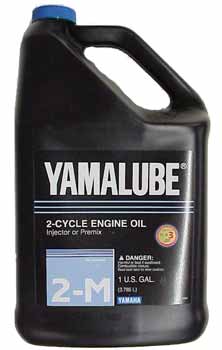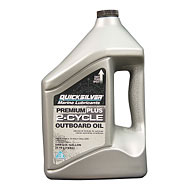Preparing your outboard motor for winter
 As autumn ushers in the cold weather that can be destructive to outboard motors, boat owners should think about the steps it takes to prepare their vessels for winter. The first step in getting an outboard motor ready for the winter is to remove all remaining gas from the carburetor – either by adding a gas stabilizer and running the engine until it dies, or draining and storing the gas for next season. Once the gas has been emptied, it’s safe to remove the motor and begin draining and refilling the lower gear unit.
As autumn ushers in the cold weather that can be destructive to outboard motors, boat owners should think about the steps it takes to prepare their vessels for winter. The first step in getting an outboard motor ready for the winter is to remove all remaining gas from the carburetor – either by adding a gas stabilizer and running the engine until it dies, or draining and storing the gas for next season. Once the gas has been emptied, it’s safe to remove the motor and begin draining and refilling the lower gear unit.
Old gear lubricant should be drained from the lower gear unit and replaced with fresh lubricant to prevent rusting, freezing or breakage. The spark plugs should also be replaced when preparing an outboard motor for winter. Once they’ve been removed, an aerosol commercial fogger should be sprayed into the spark plug hole to prevent the piston and cylinder walls from corroding. After fogging the cylinder, rotate the engine flywheel to distribute the outboard motor oil on the cylinder walls, and finish with new spark plugs.
And even though the gas has been drained from the motor, the fuel filter should be removed and cleaned to drain any remaining trapped gas. If these preparative steps are taken every year, your motor should be running smoothly when spring rolls around.



 Yamalube oils are of such high quality that they often end up used as the standard test oil for many of the National Marine Manufacturers Association (NMMA) TC-W3® certifications. The long-term goals of the two-cycle outboard boating engine industry have been to reduce emissions from oil that has passed through engines, developing a quality of oil that reduces the necessary ratio of oil to fuel, and ultimately prolonging the life of the engine. When these goals are achieved, emissions are significantly reduced, which satisfies or exceeds EPA requirements. There are also less warranty and maintenance issues with customers in the long run. TC-W3® lubricant is an NMMA owned trademark. Evolving through the years with the help of exhaustive testing and research, it has not only proven to be the level of lubrication performance quality required, but has consistently exceeded EPA emissions reduction requirements as two-cycle outboard engines have moved toward higher cylinder temperatures and compressions and increasingly demanding conditions. NMMA sanctions only two cycle lubricants that meet or exceed stringent regulations in their own designated laboratories. Tests include a variety of performance-based measurements for fluidity, lubricity, viscosity, carbon buildup on engine pistons, and ring sticking. The chemical makeup of the TC-W3® oils vary due to the unique additive packages incorporated into each individual oil brand. TC-W3® oils are recognized worldwide as being recommended for use by two cycle oil makers.
Yamalube oils are of such high quality that they often end up used as the standard test oil for many of the National Marine Manufacturers Association (NMMA) TC-W3® certifications. The long-term goals of the two-cycle outboard boating engine industry have been to reduce emissions from oil that has passed through engines, developing a quality of oil that reduces the necessary ratio of oil to fuel, and ultimately prolonging the life of the engine. When these goals are achieved, emissions are significantly reduced, which satisfies or exceeds EPA requirements. There are also less warranty and maintenance issues with customers in the long run. TC-W3® lubricant is an NMMA owned trademark. Evolving through the years with the help of exhaustive testing and research, it has not only proven to be the level of lubrication performance quality required, but has consistently exceeded EPA emissions reduction requirements as two-cycle outboard engines have moved toward higher cylinder temperatures and compressions and increasingly demanding conditions. NMMA sanctions only two cycle lubricants that meet or exceed stringent regulations in their own designated laboratories. Tests include a variety of performance-based measurements for fluidity, lubricity, viscosity, carbon buildup on engine pistons, and ring sticking. The chemical makeup of the TC-W3® oils vary due to the unique additive packages incorporated into each individual oil brand. TC-W3® oils are recognized worldwide as being recommended for use by two cycle oil makers.
